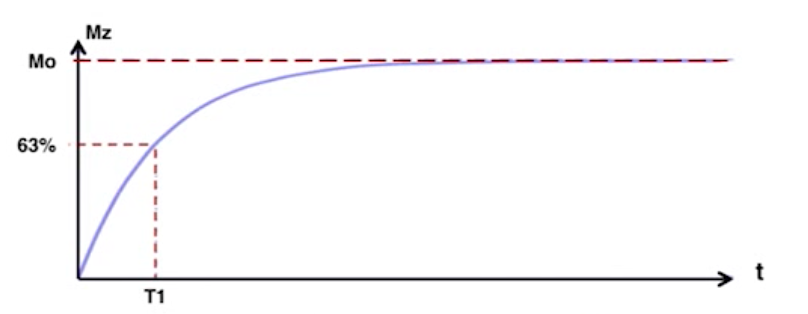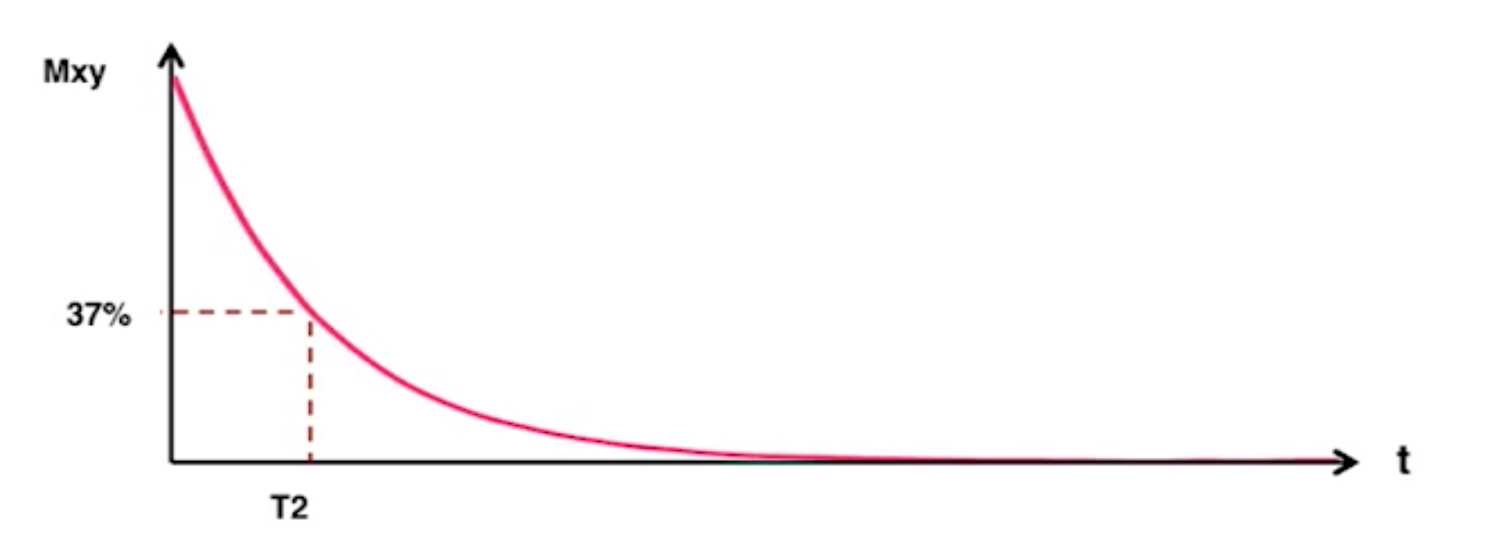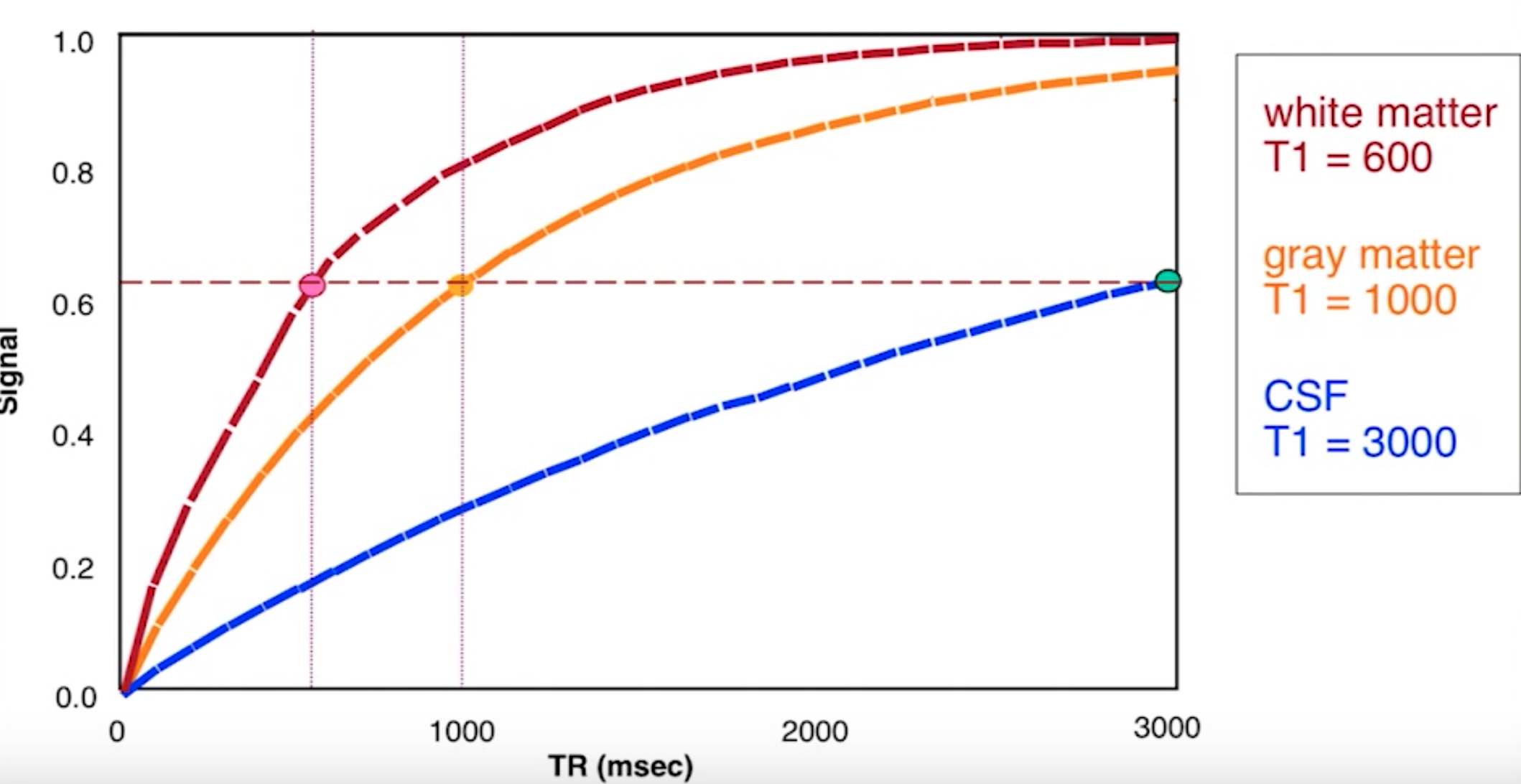Video
Questions
Longitudinal Relaxation

Q. If a tissue type is said to have a faster longitudinal relaxation time, does it imply that its T1 value is higher or lower?
A. TODO
Transverse Relaxation

Q. If a tissue type is said to have a faster transverse decay, does it imply that its T2 value is higher or lower?
A. TODO
Longitudinal Magnetization and Tissue Types

Q. If a new tissue type is said to have a faster longitudinal magnetization relaxation time than that of all the three tissue types shown, where do you expect to see the line of that new tissue type lies (i.e., above or below)?
A. TODO
Q. Suppose TR is set to 1000. Consider two brain areas A and B. A is composed of 80% white matter and 20% CSF. B is composed of 80% gray matter and 20% CSF. Which brain area may look brighter in an image that emphasizes T1 characteristics (i.e., T1 weighted image)? Why?
A. TODO
Q. Now suppose we increase TR from 1000 to 3000. Does the difference in brightness between A and B increase or decrease? Why?
A. TODO
